Xjet Opens Additive Manufacturing Center Gives Details on Nanoparticle Jetting 3D Printing We Interview CEO Hanan Gothait
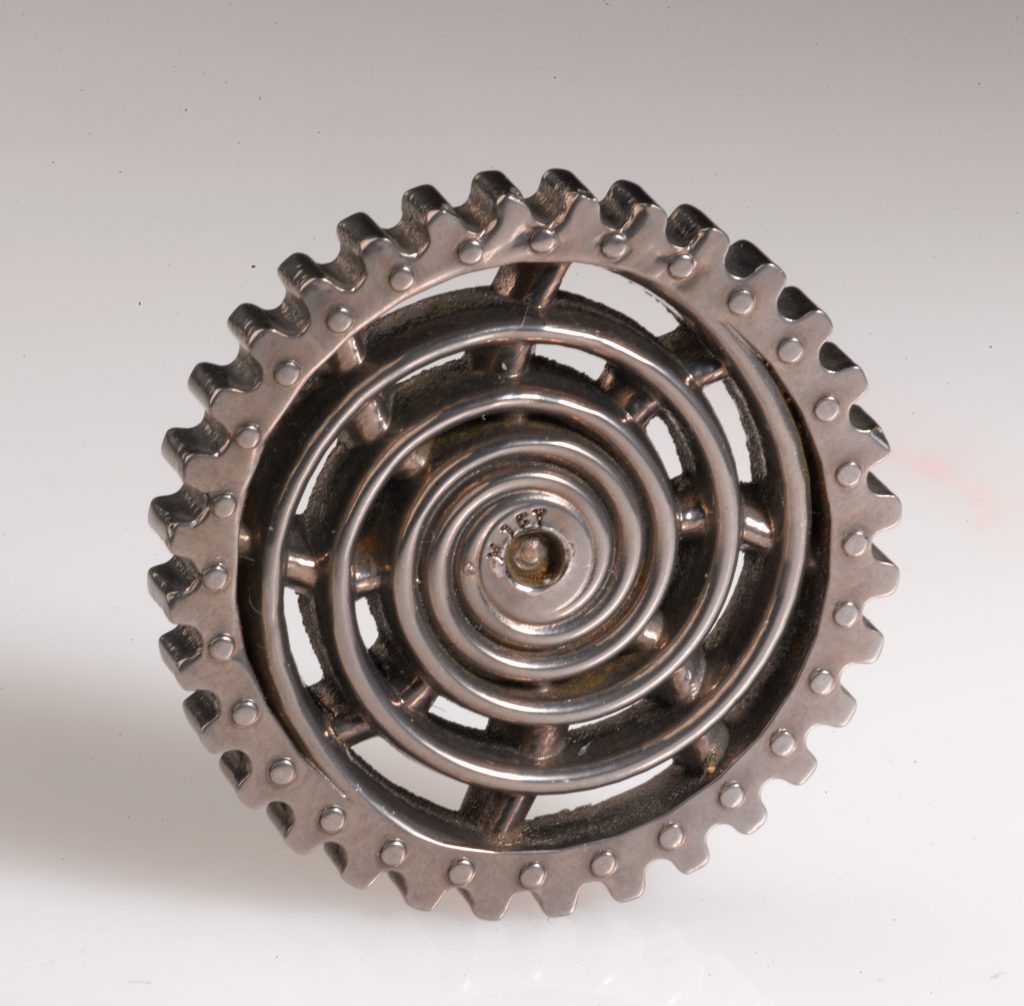
316L Stainless Steel part
A number of journalists and partners have been taken on a whirlwind tour of Israel by Xjet. The ceramics and metal printing company wanted to show us their homeland as well as their new Carmel 1400 AM System and the opening of their Additive Manufacturing Center was the occasion. We stay in Tel Aviv amidst gleaming towers, bustling sidewalk cafes, markets and an impossible number of young people zooming by on electric scooters. A passionate tour guide extols the virtues of the land and her people as our bus drives to Rehovot.
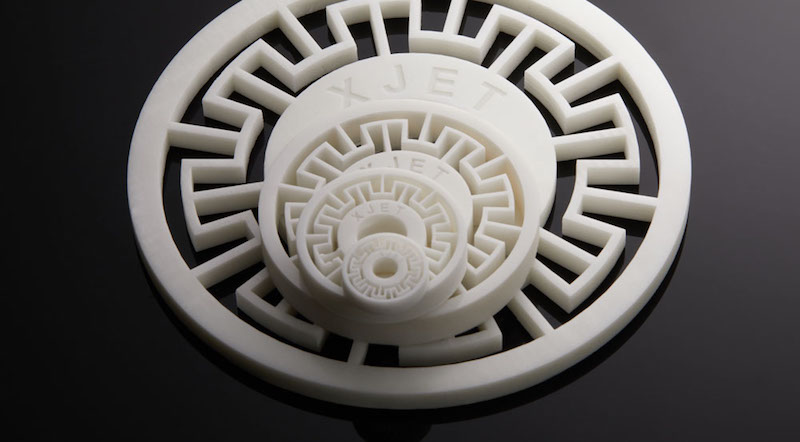
3D Printed Xjet Ceramics
The Carmel 1400 has a 500 by 140 by 200 mm build volume, 10 to 15 micron layer thickness and ways two and three-quarter tonnes. That’s almost two Toyotas. The printer is capable of printing zirconia parts with features of a 100 microns at 1 mm per hour build speed at a part density of 99.95%. The Zirconia Zr02 comes with a support material that let one have a high degree of geometric freedom with this technical ceramic. Part shrinkage is uniform in every direction and predictable. Another new material is Stainless Steel, 316L. Both support and build material are supplied in cartridges in a liquid suspension form.
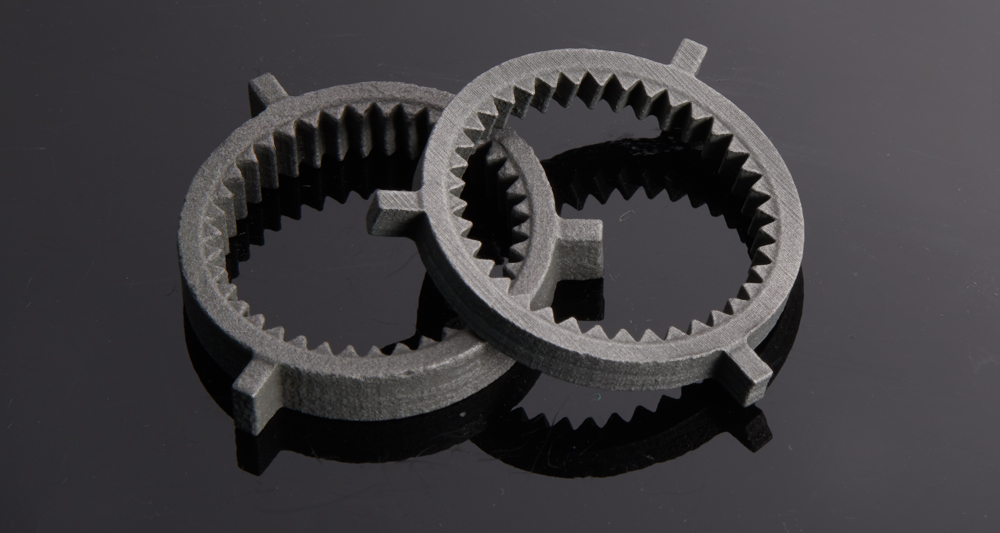
316L Stainless Steel parts no post-processing apart from support removal and sintering.
Xjet’s technology NanoParticle Jetting has been designed as an inkjet-based technology to make parts at high volume and througput. The nanoparticle build material is then jetted with both support and build material to be jetted simultaneously. The liquid suspension that contains the nanoparticles then evaporates due to a heated chamber. Then parts are sintered, and support is removed. Support is soluble and is dissolved in a solvent bath.
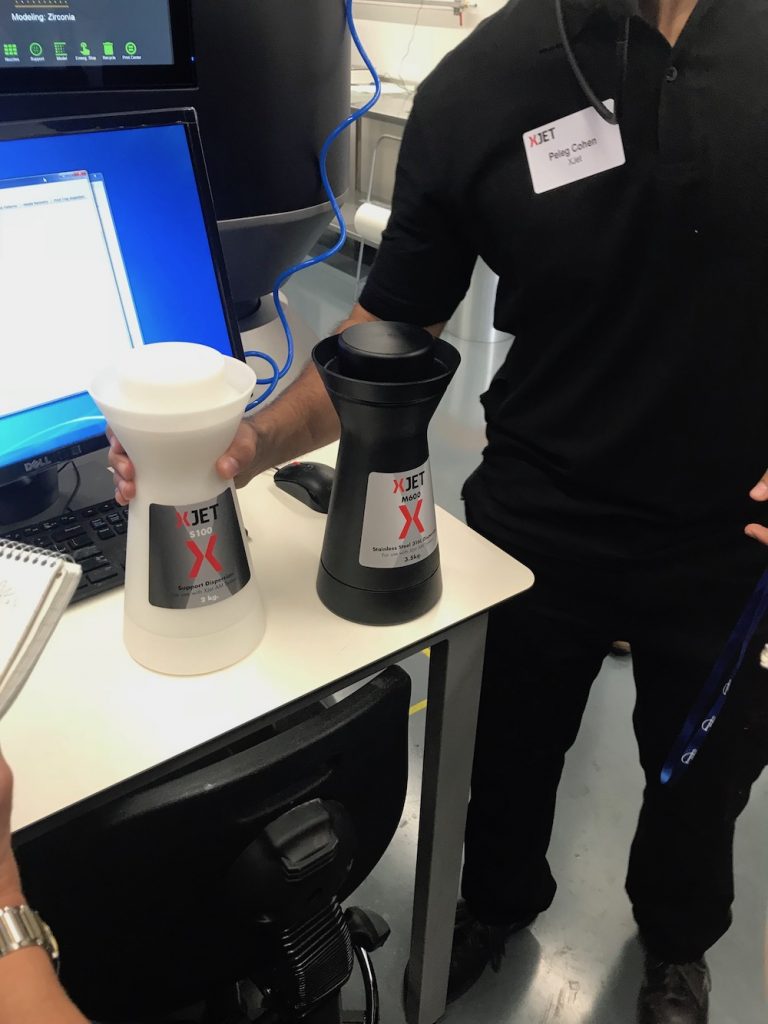
Xjet’s Material Cartridges
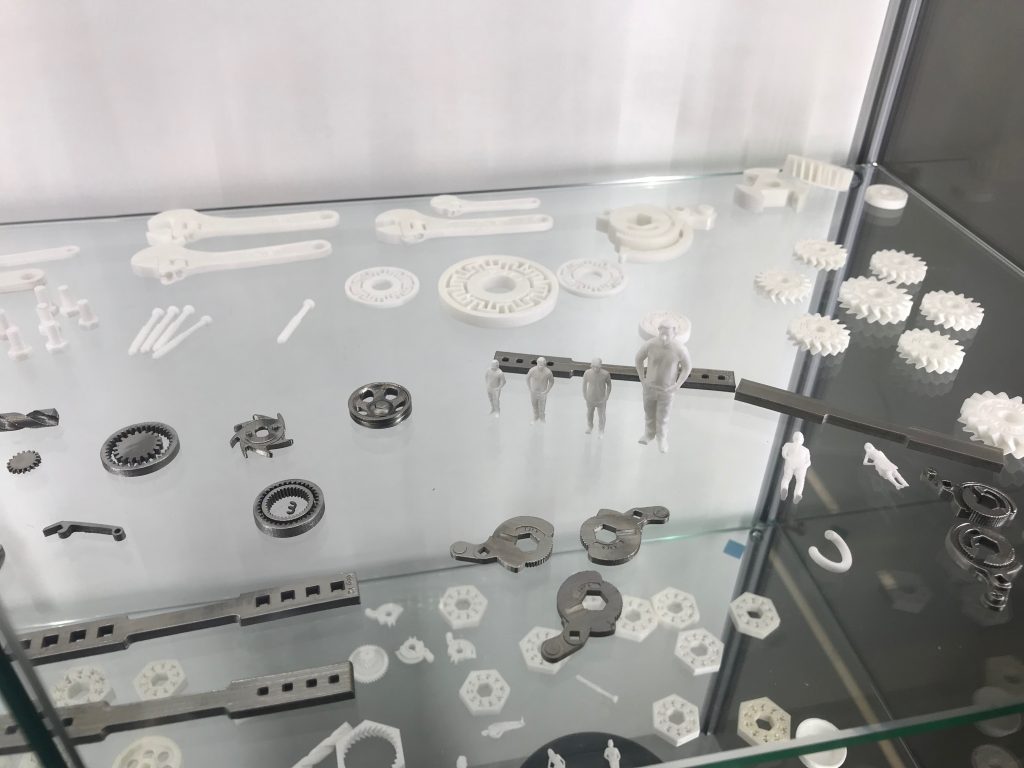
Various 3D Printed Xjet Parts
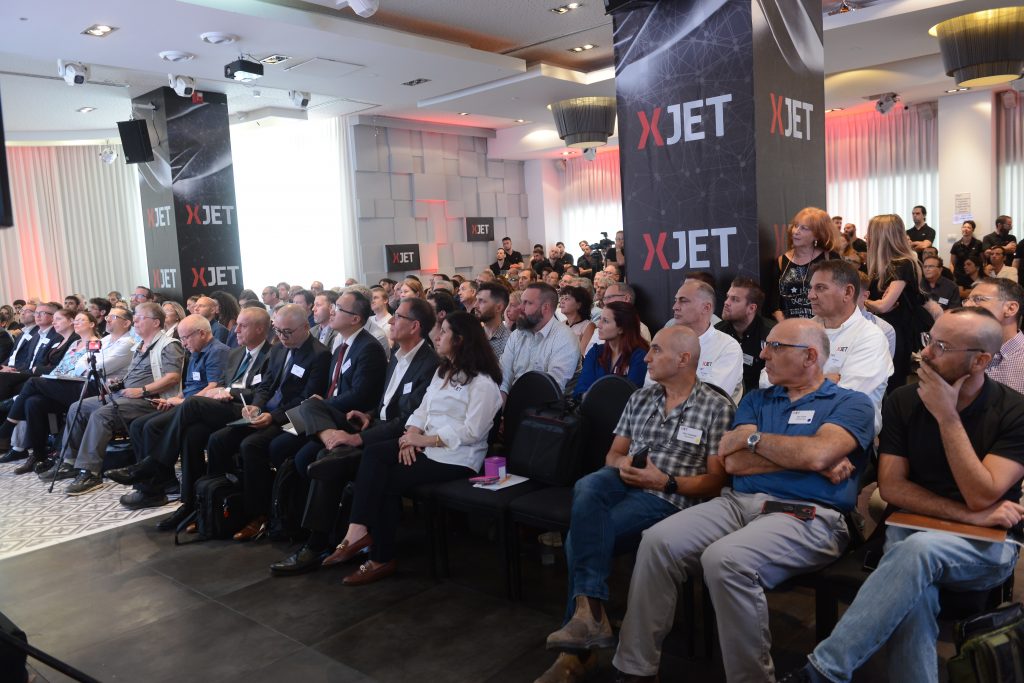
The crowd at the speeches.
Xjet is a product of a number of industry veterans in inkjet, some of whom played pioneering roles in creating Objet Polyjet, the Stratasys inkjet technology. The team and the machine are impressive as well. Their ambition complements this with a sated claim to move into metals and ceramics printing for production. Ceramics 3D printing so far has been limited in build volume and throughput. You could print technical ceramics but could not make thousands of Zirconium parts per day.
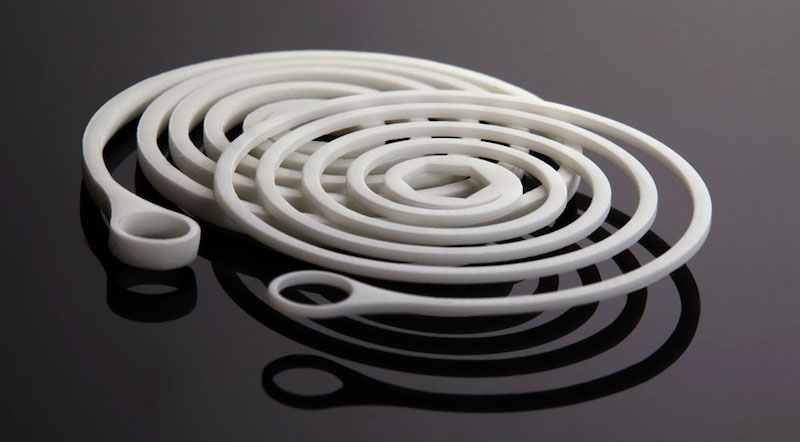
This is precisely what companies want to do with the materials, however. Extremely high wear parts with extremely high-temperature and abrasion resistance are used widely in industry. Nozzles, high wear machinery surfaces, medical components, teeth, and other dental replacements are all candidates for Zirconium parts. As for stainless steel, that application area is much much broader, but that would have to be determined at a later date. The stainless materials would depend much more on the cost to be viable. There are also several metal printing technologies that could make them.

We are lead into a meeting room and listened to some presentations. Xjet founder Hanan Gothait told us to “enjoy the future of 3D metal and ceramics.” He was proud of the Xjet team completed the project on time and on budget. He also said that “Additive Manufacturing is moving from theory to real, ideas to products, prototypes to real parts.” He also mentioned that “the metal 3D printing, “market is boiling, and we are ready to deliver.” Next Professor Oded Shoseyov gave a presentation detailing his attempts to make a collagen replacement through getting tobacco plants to grow collagen using expressions of five human genes. He is also working on Nanocellulose as a biological additive with a wide array of applications in material science. Perry Davidson the CEO of SyQue an innovative metered dose marijuana and other botanicals inhaler then took us on a fascinating journey to see how their company used 3D printing. Mr. Andreas Berkau of engineering company Oerlikon then explained to us that “Xjet is a truly disruptive technology” and that the future of 3D printing is in “closed value chains” that have “systems beginning to end” and have “whole ecosystems for additive manufacturing.” Dror Danai Xjet’s Chief Business Officer then went on to also talk how important the Xjet team is while decrying the powder bed fusion systems. Dror believes that liquids can provide much better results than traditional powder bed systems. He mentions that powder bed fusion parts are typically limited to 50 micron parts while in the lab Xjet has printed 10 nanometer particles. He stated that the “Digital manufacturing dream vanishes” with post-processing. Manual post-processing slows part production and increases costs significantly. With Xjet’s easier post-processing using soluble support parts will be a fit for manufacturing.

Xjet CEO Hanan and Formnext VP Sacha Wenzler
We then as a group of over a hundred descend to wait before the Xjet Application center. Sacha Wenzler of Formnext opens it. Once open we can find operational Carmel 1400 Xjet systems. We are shown highly accurate and very smooth metal and ceramics parts as well as the support removal process. The machines look very complicated indeed. They hum and with a swoosh deposit every new layer from two mixing jars, one for support and one for build material. The machines are big beasts of things and dutifully lay down each layer in turn.
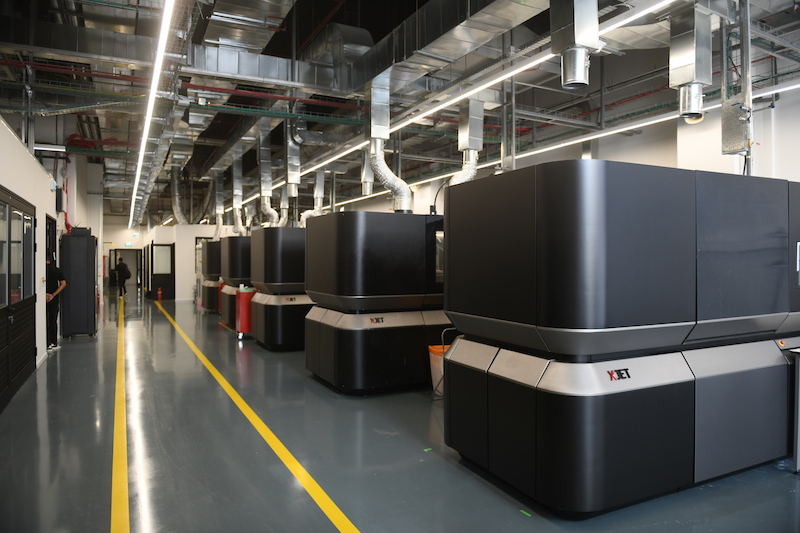
The Xjet Additive Manufacturing Center
Later on, we will go on to see where the Xjet systems are assembled. There whale carcasses lie of machines that will be made as well as nearly finished systems for Oerlikon, Carfulan and the University of Delaware. Larry Holmes of the University of Delaware poses for the machine his university will receive. Then we head off with dervish-like speed for a tour of Jerusalem. All in all, it was a lovely trip and an excellent chance to have a lot of in-depth contact with the Xjet team. The team are all very open and responded to in-depth technical questions with deep understanding.
3DPrint.com got the chance to interview Xjet CEO and founder Hanan Gothait. He told us that
“The significance of Xjet is that is is a new and innovative powderless nanoparticle inkjet technology which is safe, easy to use and gives you totally accurate parts with smooth surfaces. Everyone is using 50 micron layer thickness and we are using 7 micron layers which leads to better surface quality. In addition we have fine features that no one else can do. Support material is also a different material which can be removed by immersing the part in water. This dissolvable support means that you can make more complex geometries in metal. The big breakthrough is to make 3D printing for ceramics and metals safe and simple while making support easy to remove.”
He also stated that,
“The fine particles we use also create high-resolution parts while simplicity means that you don’t need to be a Ph.D. to operate the machine.”
and that,
“Medical devices, dental, industrial companies, automotive and aerospace companies are already customers. We want to partner with customers and help them grow.”
Hanan has a multi-decade in 3D printing starting with his founding of Objet, now a Stratasys unit. Since then..
“In the Objet days no one spoke of manufacturing, the dream was to become a prototype supplier. Still today most of the market is prototyping but we are targeting production now and we see ourselves as one of the leaders.”
This is a company steeped in inkjet and 3D printing. Compared to a lot of US-based startups this company has many people with ten of twenty years experience in 3D printing. Dozens more have decades of experience in inkjet. As we pass by the Intel Fab and large HP Indigo buildings where printers and inks are made we can see that near the Xjet assembly location there is a vast inkjet ecosystem. Sitting in the middle of this ecosystem, Xjet has access to a very deep and very experienced talent pool of people. Where a US based start usually throws a bunch of very bright kids at the problem, Xjet has dozens of employees who have seen this problem before and also has the bright kids as well. Especially the deep involvement with originating the Polyjet technology is a massive plus for the Xjet team. At one point Objet was nearly dead because an engineering team had not managed to turn a slick idea into a working machine and software combination. Resolute management steps and a re-engineering of the system brought the easiest to use and slickest software, materials and machine combo of the day. This kind of sophisticated engineering approach and the skills needed for it are vital to producing high-quality 3D printers. It is easy to make 3D printers and very difficult to make good 3D printers. By understanding the need to know how the complex interplay of software settings and materials interact to form the part high-quality machines can be crafted. It is not the highly detailed parts or the engineering in the machine that inspires confidence but rather the paths that the team has taken to get here. By focusing on ceramics and trying to create a highly productive solution to manufacture them Xjet has taken an interesting turn towards the future of 3D printing. A segway to metal parts could also deliver a lot of value to customers as could an investment in BMG’s or 3D printed circuits. For now, 3D printing ceramics at volume is a tremendous opportunity. If done well this is precisely the kind of technology and part that could widely expand the scope of the possible in 3D printing and Xjet may just be the company to make that happen.
Subscribe to Our Email Newsletter
Stay up-to-date on all the latest news from the 3D printing industry and receive information and offers from third party vendors.
You May Also Like
3D Printing News Briefs, April 13, 2024: Robotics, Orthotics, & Hypersonics
In 3D Printing News Briefs today, we’re focusing first on robotics, as Carnegie Mellon University’s new Robotics Innovation Center will house several community outreach programs, and Ugogo3D is now working...
Rail Giant Alstom Saves $15M with 3D Printing Automation Software 3D Spark
3D Spark has entered into a three-year deal with the rail giant Alstom. Alstom, a transport behemoth with annual revenues of $16 billion, specializes in the manufacture of trains, trams,...
Meltio Expands Global Reach with New Partnerships in the Americas and Europe
Spanish 3D printing manufacturer Meltio has expanded its sales network across the globe. With the addition of three new partners in the United States, Brazil, Argentina, and Italy, Meltio aims...
3D Printing Webinar and Event Roundup: April 7, 2024
Webinars and events in the 3D printing industry are picking back up this week! Sea-Air-Space is coming to Maryland, and SAE International is sponsoring a 3D Systems webinar about 3D...































